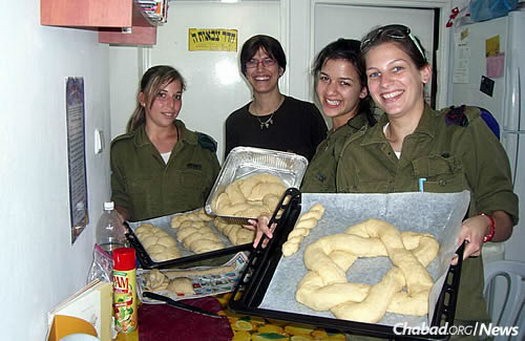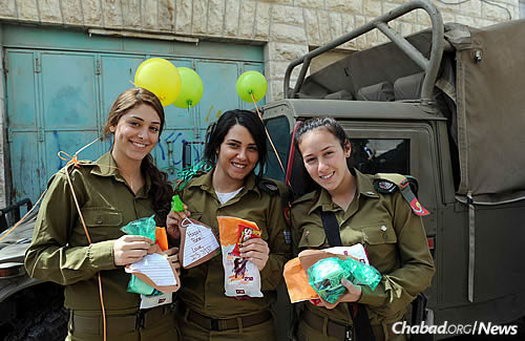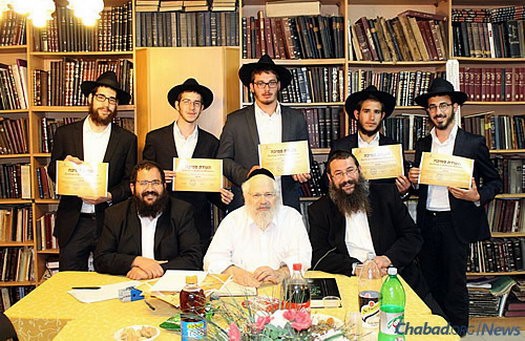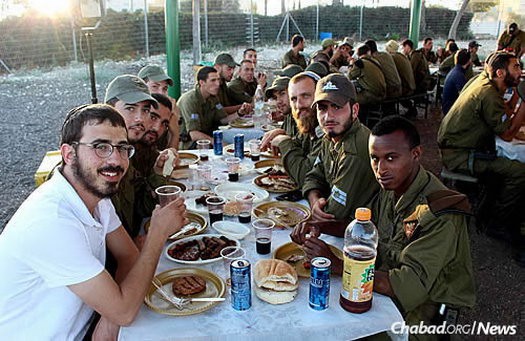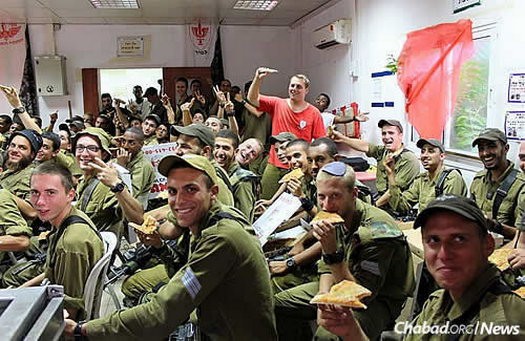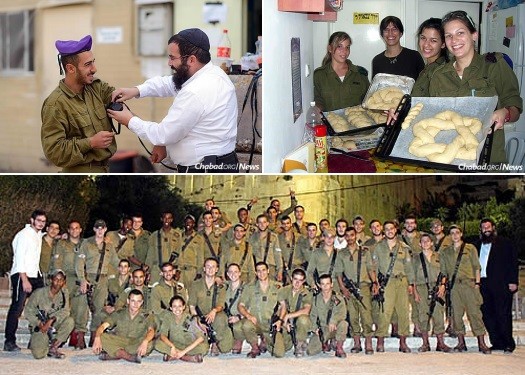
In the Ancient City of Hebron, Chabad Center Celebrates a Special Bar Mitzvah: Its Own
It’s impossible to know how many bar mitzvahs have been celebrated in this most ancient of Jewish cities in the last 3,700 years since the patriarch Abraham purchased his family’s burial plot here. It’s just as difficult to determine how many Chassidic celebrations and milestones have been marked since the second Chabad-Lubavitch Rebbe—Rabbi Dov Ber, known as the Mittler Rebbe—purchased property in this holy city more than 200 years ago.
Sept. 2 this year is Chai Elul (the 18th of the Jewish month of Elul), a significant day for Jews all over the world, marking the birthdays of both Rabbi Israel Baal Shem Tov, the founder of Chassidism, and Rabbi Shneur Zalman of Liadi, the founder of Chabad-Lubavitch.
With special events and learning programs in cities and towns everywhere (and online as well), Chai Elul will be marked in the ancient city of Hebron with another important anniversary—the bar mitzvah of Chabad of Hebron, representing 13 years since Rabbi Danny and Batsheva Cohen moved to the ancient Jewish city to establish and direct what is now the Chabad House at the Ma’arat Hamachpelah, the Cave of the Patriarchs.
And in honor of its bar mitzvah year, supporters are seeking to raise $500,000 in a 24-hour online funding drive beginning on Wednesday, Sept. 2, at 12 p.m. EST.
Rabbi Cohen makes it clear that although he and his wife started their center 13 years ago, Hebron had not lain fallow, bereft of Chabad presence in the years prior to their arrival.
“My wife and I have not only been privileged to continue the work of the Rebbe [Rabbi Menachem M. Schneerson, of righteous memory],” says Cohen, “but to be part of a storied history of Chabad in Hebron that began when the first Chabad community was established here almost 300 years ago.”
Serving All: Locals, Tourists, IDF Soldiers
In addition to serving the local community of families who moved to Hebron after the city was reclaimed in the Six-Day War of June 1967, and the steady stream of tourists from Israel and around the world who visit the Cave of the Patriarchs throughout the year, Chabad of Hebron focuses its activities on the large and ever-changing community of soldiers in the Israel Defense Forces stationed there, protecting the city and the region.
Upwards of 500 troops reside here at any given time. Every four months, the rotation changes, so that over the years thousands upon thousands of soldiers have had their lives touched the Cohens and their dedicated staff in different ways.
For Rabbi Cohen, who served in the Givati Brigade, helping soldiers materially and spiritually has additional meaning. In many cases, it is the first time that some of these stalwart young Israelis have had any exposure to Torah Judaism.
Before Shabbat and the holidays, the Cohens—the parents of six children—make their way to the two army bases, as well as to the more remote outposts, checkpoints and sometimes even hostile neighborhoods bringing, cake, coffee, food for Shabbat, candles to light, and Jewish song and dance. Torah classes are offered, and to some of the soldiers, this represents their first exposure to traditional learning.
Of the many yeshivah students in Hebron, there are always two boys who make the rounds of the bases, helping soldiers put on tefillin. And in a program partnered with Rabbi Shmuel Gurevich of Lyon, France, a pair of tefillin is offered—at no charge—to those men who take it upon themselves to don them every weekday.
Programs for Women Soldiers
Batsheva Cohen, who has instituted a course of study and special events for women soldiers, has watched her program develop over these past 13 years. What started as three or four attendees in a weekly class at an army base has now grown exponentially with 60 women at one base attending weekly classes and 35 regular attendees at a second base.
Jewish law, Jewish thought, challah-baking, candlestick-making and even a tour of the mikvah (the ritual bath) are part of the regular activities that she provides. “For some of these women, this may be the only time they will even see some of these things,” explains Batsheva Cohen. “And due to the rotation and the sheer number of soldiers we come into contact with, we don’t always get to see how this experience may have impacted their lives.”
The Cohens are quick to emphasize not only Chabad’s history in Hebron, but specific Chabad activity there soon after the city was returned to Jewish hands in 1967.
“Baruch and Sarah Nachshon, for example, with great personal sacrifice, led many battles to maintain and ensure Jewish presence in Hebron,” notes Rabbi Cohen, “ by teaching and disseminating Torah and chassidus, and feeding and hosting Jews from every walk of life.”
Reclaiming and Restoring Historic Properties
One aspect of the Cohens’ mission, which they describe as unique, has been to reclaim, restore and tend to properties that had been owned by Chabad for centuries, including several properties purchased in the early 1800s by the second Chabad-Lubavitch Rebbe.
These buildings had to be abandoned when the British expelled the remaining Jews in the aftermath of the 1929 massacre of Jews by Arabs. “Chabad ofHebron has merited to have restored, revamped and given them new life,” says Cohen, with some of the more prominent properties being used for learning Torah, davening (prayer), and hosting Chassidic gatherings and discourses.
In 1844, the Mittler Rebbe’s daughter, Rebbitzen Menucha Rochel Slonim, left Russia
together with her husband, Rabbi Yaakov Kuli Slonim to fulfill her dream of living in Hebron. As matriarch of the Chabad community, she would receive guests in her home, which became known as Beit Schneerson.
In 1878, a wealthy Turkish Jew by the name of Chaim Yisrael Merikado Romano built a palatial home and guesthouse that was eventually known as Beit Romano. In 1901, the renowned Sephardic sage, Rabbi Chaim Cheskia Medini—the Sdei Chemed—arrived to live there and then established ayeshivah. Learning that the Romano family was interested in selling the property, the Sdei Chemed offered it to the Fifth Lubavitcher Rebbe, RabbiShalom DovBer Schneersohn—the Rebbe Rashab—where he established theYeshiva Torat Emet.
“And now, with G‑d’s help, in a few months we are anticipating the opening of a beautiful new museum and guest center at Beit Romano due to the planning and efforts of Yeshivat Shavei Hebron,” says Rabbi Cohen, the anticipation unmistakable in his voice.
Instead of a big party, the Cohens have chosen Chai Elul this year to kick off an online fundraising drive to enable them to continue efforts to further the growth of Chabad in Hebron.
“Here, in Hebron,” states Cohen, “is where the Patriarch Avraham sat outside his tent to welcome every passerby, and invite him inside to eat and to learn about G‑d. This is the path we follow.”
To participate in the 24-hour Bar Mitzvah fundraising drive, visit the matching donation page here.



